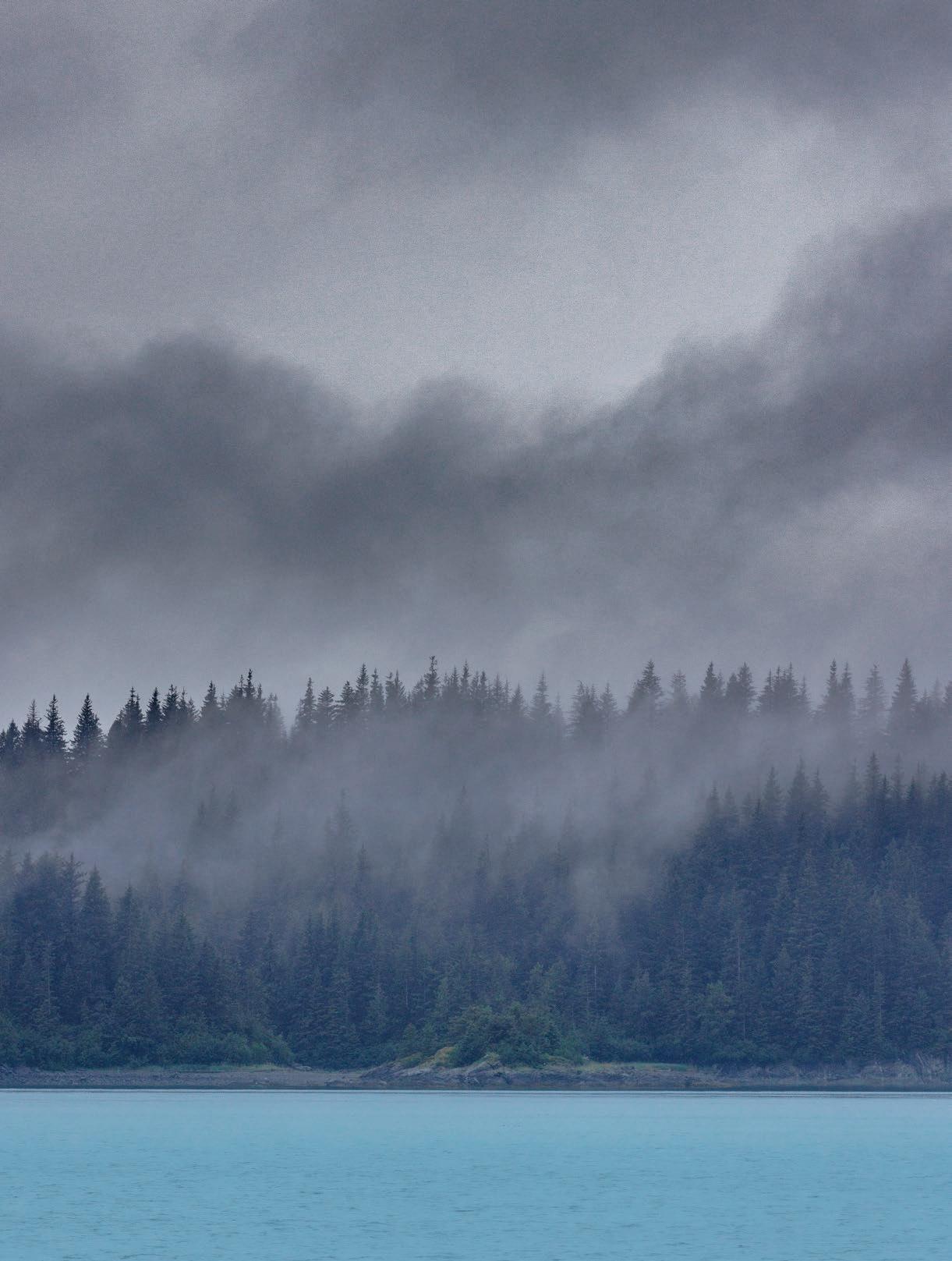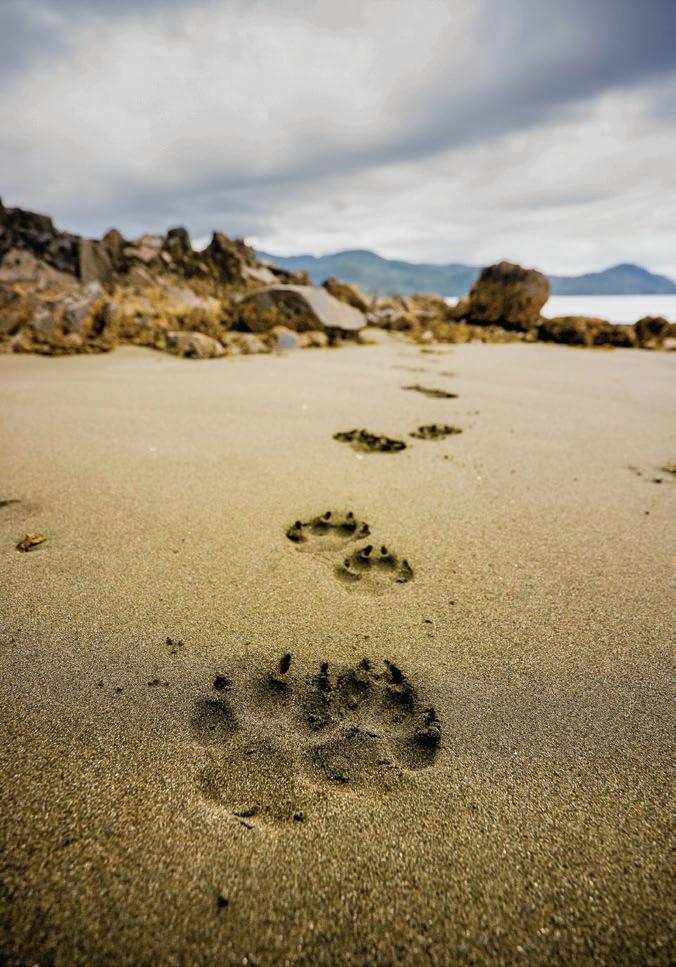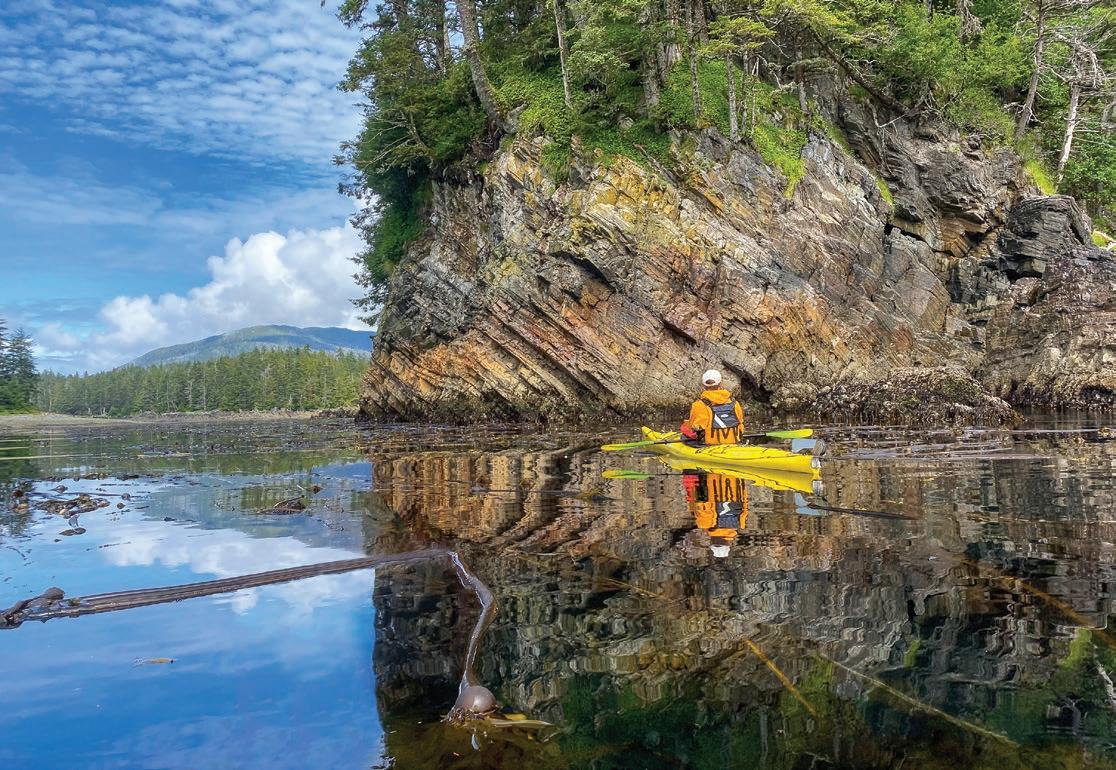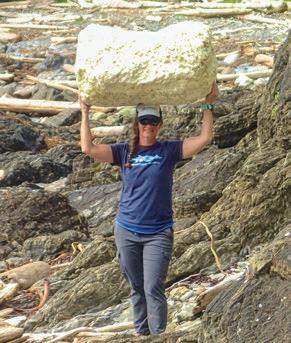
8 minute read
Beyond the Beach
10 Years of the Ikkatsu Project
Story by Ken Campbell
Every year, between 8 and 12 million tons of plastic, much of it single-use, enter the ocean. While larger pieces may break into smaller ones in the water and on the beaches, the plastic itself never completely breaks down. Individual pieces of plastic can be rendered microscopic, perhaps difficult to see, but they are not gone.
The issues surrounding marine debris and the high concentration of plastic in fresh and saltwater environments have been the Ikkatsu Project’s driving focus since beginning operations in 2012. By incorporating sea kayaks to access remote beaches in the Pacific Northwest and elsewhere, we’ve collected data and tons of marine debris from some of the wildest places on the planet. This has allowed us to document the effect of the growing plastic load in the oceans – on all kinds of sea life, from plankton to whales, and extending to humans.
Although most of the work of the Ikkatsu Project over the past decade has focused on areas here in the Pacific Northwest—building kayaks out of discarded plastic bottles and Styrofoam, canoeing the Puyallup watershed freshwater to conduct microplastic surveys, and launching field studies in area middle schools—we have also continued our efforts in Alaska, most recently at Cape Decision, on the southern tip of Kuiu Island.

Photo by John D’Onofrio
The lighthouse at the tip of the Cape is one of the most remote locations in southeast Alaska, almost 100 miles west of Wrangell and just under 100 miles south of Sitka. The beaches on the windward side of the peninsula are exposed to the full force of the Pacific, while the eastern coves and inlets are more protected. As a result, the waters teem with whales and otters, sea lions, and salmon. Kelp forests run along the nearshore in many places, and there are always several eagles watching from the tall spruce trees at the edge of the forest.
Although fishing vessels and other craft frequently use Decision Pass, Cape Decision itself is difficult to access. The area is prone to high winds and inclement weather that makes dependable travel to and from the Cape and between certain points on south Kuiu extremely difficult. Beaches are rocky, and large swells can make landing and launching in small craft a risky proposition. As with literally everything else in Alaska, flexibility is the key to success.

Wolf Track Beach lives up to its name. Wolves and black bear are plentiful on Kuiu Island, although they can both be quite elusive.
Courtesy of The Ikkatsu Project
The volume of debris on the beaches in southeast Alaska is staggering. Fishing gear, plastic bottles, household items, and every other kind of plastic imaginable can be found on any island shoreline in large quantities. The program’s main goals, since its inception in 2018, include not only counting, weighing, and tracking the debris but also bagging, removing, and finally, transporting it to a landfill or other suitable destinations. Volunteers spend a week at the lighthouse and paddle or hike to clean up nearby beaches.
In addition to standard surveys and microplastic sampling, a multi-year deposition study is going into its fifth year. It involves an effort by volunteers to ensure complete debris removal on the target beach, collecting and counting each item found until the shoreline is free of all plastic and other debris. By continuing this process each successive year, we can be confident that anything collected has come ashore in the intervening time. Regularly repeating this process contributes to a better understanding of how debris travels and the rate at which it accumulates on shore. With the addition in 2021 of a new deposition study beach on the island’s windward side, it will now be possible to use parallel data to compare impacts on each of the separate beaches.
Given the number of logs lining the high-water mark of each beach, and their deposition in shifting piles, often many layers deep, it can be challenging to determine exactly how much debris remains after a crew completes cleanup operations. However, they make every effort to get to beach level, and when debris is spotted, it is retrieved, even from under logjams. This is especially true for the deposition study beaches; any outsized or trapped debris found impossible to remove is documented.
Critical to the success of surveys and beach cleanups scheduled each July is the relationship between the Ikkatsu Project and the Cape Decision Lighthouse Society (CDLS), the organization responsible for the preservation of the historic building and the surrounding lands. Having a base camp as unique and adaptable as this one makes the program’s ongoing success possible and provides a lot of fun in the process. The CDLS Is a dedicated group of staff and volunteers with their own list of multiple projects to accomplish each summer, and the buzz of activity, whether at the cape or out on a beach somewhere, is almost constant.

A rare calm-water day on the west side of the island, on the way to Howard Cove through the low-tide kelp gardens.
Courtesy of The Ikkatsu Project
Since the start of the program, we’ve had dozens of volunteers make the trip, and they have been able to survey and clean ten different beaches within paddling distance of Cape Decision. (And everywhere is paddling distance if you have the time, right? More extensive trip plans are in the works.) The beaches are often rocky, and kayak landings are not always easy. Still, some locations are more accessible, including the mile-long sweep of Howard Cove, located about four miles north of the lighthouse on the exposed west side, a sandy swath of shoreline that looks more like California than Alaska. Some cleanup work was done at Howard Cove in 2019, but 2021 was the first year crews could complete full surveys, and it will not be the last. Of all the locations documented thus far, this is the one that likely has the most debris, with large numbers of buoys, bottles, and rope balls deposited well into the trees above the sand.
Surveys at various locations have yielded varying amounts of debris through the years. The outer coast beaches are more affected than those on the protected east side of the peninsula. Every beach we visited was significantly littered, and most of what we found was plastic. In total, 4,990 pounds of marine debris has been removed, with about 3,000 pounds bagged up and still awaiting transport back to Wrangell or Petersburg.
In 2020, the Ikkatsu Project released a film, Decision, a 12-minute story about south Kuiu Island, marine plastic, and the volunteers working to clean it up. Beautiful visuals of breathtaking Alaskan scenery, wildlife, and the lighthouse are woven into the story of plastic, how it got to such a remote location, and the decisions we all need to make for real change to happen. Selected to the Paddling Film Festival’s world traveling list and the online National River Supplies’ Duct Tape Diaries, the film is an excellent introduction to the work of the Ikkatsu Project. It is always hard to precisely say what the future holds, but there is no shortage of potential projects. The deposition studies remain a significant focus, as does working to remove the debris already collected. Beyond that, an extended kayaking venture is in the planning stages for 2023, a circumnavigation of the south part of the island involving at least one significant portage and allowing for a series of surveys and a substantial assessment of the area. Going forward, the sea kayaking aspect of the South Kuiu Cleanup will continue to be a big part of the program, the best way to get volunteers into isolated locations to collect debris and data.

Volunteer Eleanor Hines with a foamed plastic buoy. Left on the beach, these continue to split into smaller pieces on the rocky shore until they become tiny single pellets of plastic that are virtually impossible to pick up.
Courtesy of The Ikkatsu Project
The problems associated with marine plastics have serious consequences for people and all other life throughout the food web. The fact that so much plastic is on these remote beaches provides a powerful illustration of the ubiquitous nature of the problem. While the collected data can provide critical information, what matters is how researchers use and connect it between wild places like these and people everywhere. To love and protect these wilderness shorelines is going to take an understanding of the threats they face and how our behaviors and habits play a part in the larger picture. There needs to be that spark in each of us, that recognition of responsibility and a desire for change. Working consistently toward that point continues to be the Ikkatsu Project’s primary goal.
For more information on marine debris, expedition reports, and news about upcoming programs, visit www.ikkatsuproject.org.










